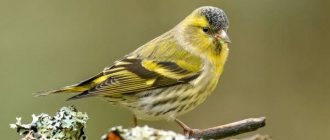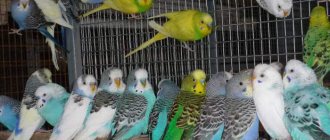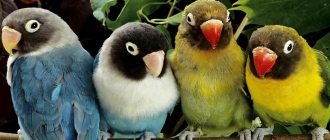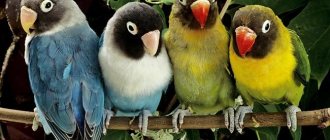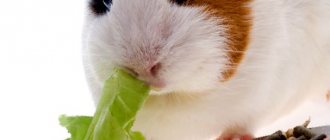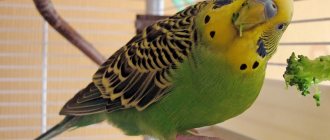In winter, especially after snow falls, the bright spots of bird plumage become especially visible against a white background.
The most frequent guests of city blocks at this time are tits - small passerine birds, whose distinctive feature is lemon-yellow plumage on the chest and abdomen. Slightly less common are bullfinches, which can be easily recognized by the bright crimson color of their breasts. Both birds constantly catch our eye in winter, but with the onset of warm weather they disappear somewhere. Where do bullfinches and tits live in the summer? Perhaps they fly away to colder regions?
What is the name of a male tit?
Names of baby animals
| Parents | Cub (child) singular | |
| Father ( male ) | Mother (female) | |
| Male tit | Tit | Tit chick , colloquially found as titmouse |
| Woodpecker | Woodpecker female | Woodpecker chick, woodpecker calf is used in zoology |
| Boar | Kabanikha | Little boar |
Spring - time to repeat the flight
At the end of winter - beginning of spring, the migration of tits begins. Birds can gather in large flocks and move slowly towards the forest. During this period, numerous flocks of great tits and blue tits may gather at the feeders. I had a chance to watch how all the trees near the house were covered with titmice - all I had time to do was plant sunflower seeds for the new birds!
By mid-spring, there are practically no tits left in populated areas. Only a few individuals that managed to find a hollow or birdhouse inhabit the anthropogenic territory. And most birds return to the forests.
There they will look for hollows, because the mating season begins. You need to take a nesting site on time. Very soon, pied flycatchers and other migratory birds will arrive and also lay claim to their forest homes.
Although the titmouse is small, it can fend for itself very well. These are strong and determined birds. If the tit has already begun laying eggs, the flycatcher will not be able to drive it away. Most often, tits kill uninvited guests.
The tit brought food to the chicks
Each species of tit has its own requirements for hollows:
- low-lying hollows and crevices in old trees on the edges are preferred by great tits and blue tits, but the latter need a narrower entrance;
- in the depths of the forest and near the swamps, the puffy creature settles - usually it hollows out its own home in rotten wood;
- Tufted tits live in pine forests;
- Muscovy nesting sites are more common in spruce forests.
What migratory birds?
Lark, ducks, rook, cranes, cuckoo, swallows, swan, starling, nightingale, heron. Migratory birds
-
birds
that fly away to warmer regions in winter.
Migratory birds
make regular seasonal movements between nesting sites and wintering sites. Relocations can take place both close and long distances.
Interesting materials:
What does dpi mean on a mouse? What does drip mean? What does different mean in iPhone storage? What does other mean in the memory of a Samsung phone? What does dsc mean? What does dtv mean? What does duplicate name mean? What does clergy mean? What does spiritual mean? What does spirituality mean?
Bullfinch - a bright bird
In winter, bullfinches sitting on branches look like ripe apples, miraculously not picked off by the autumn winds. The bright crimson plumage on the chest can be seen from afar; thanks to its characteristic coloring, this bird is difficult to confuse with other passerine species. You should know that only males have expressive breast colors, and for females nature has assigned a simple brownish “dress.”
Russian bullfinches prefer to live where coniferous forests grow, because the main dish of their winter diet is seeds, which they peck from cones with their strong beaks. However, they do not neglect other types of seeds - maple, alder, ash, etc. Bright birds love to peck elderberry or rowan berries, and they eat mainly the seeds and drop the pulp on the ground.
If bullfinches have gotten into the habit of flying into your yard, you can easily determine this by the characteristic remains of berries under the mountain ash or elderberry. In summer, they also readily feed on the seeds of wild herbs - quinoa, horse sorrel, burdock, etc.
Lifestyle
You can meet the bird in almost any region, including the Moscow region, the Caucasus, and Siberia. The birds are small in size and have characteristic yellow plumage. The peculiarity of birds is an inconspicuous way of life, which many city dwellers do not even think about.
Birds spend a lot of time in the air
Migratory or resident bird
Boobs are sedentary residents who do not leave the region in which they live. However, in severe frosts, birds gather in small flocks and move from the forest closer to residential areas. This is necessary in order not to freeze in winter and to find food.
The great tit may also travel to other regions in search of more favorable weather conditions.
Where do birds spend the night in winter?
To find out where boobs hibernate, you need to take a closer look. Birds can often be seen in window openings or under roofs.
In the village you can meet a bird absolutely anywhere where there is protection from snow and cold. The tit's habitat is varied; the bird can often be found under bush branches bent under the weight of snow.
Where he spends the night in winter can be found out as a result of observations
To understand where boobs spend the night and how they sleep in winter, you need to take a closer look. In such places, birds gather in groups and press tightly against each other. It will keep you warm. There are more feathers on the chest than on other parts of the body. During sleep, the tit fluffs up its feathers and forms a ball, thereby retaining heat.
Important! Birds bring great benefits not only in summer, but also in winter. Great tits feed on the larvae of harmful insects. In autumn and winter, yellow bellies touch the bark and remove pests, thereby protecting the tree from further infestation.
Where do bullfinches spend the night in winter?
Another bird species that appears in cities in winter is the bullfinch. To find out where bullfinches spend the night in winter, you need to carefully observe dense bushes and coniferous trees. Most often, birds take refuge from the wind and cold among the needles of coniferous trees.
It’s easy to figure out where bullfinches spend the night in winter
Where does the tit spend the night in summer?
Finding out where tits and bullfinches live in the summer is very easy. Since these birds prefer warm conditions in summer, they do not need to hide in secluded places.
Birds can spend the night in trees, under the roofs of houses. Despite hot summer conditions, birds try to protect themselves from attacks by predators. In summer, bullfinches prefer coniferous plantations away from people.
Young animals often fall asleep in feeders. This allows them to approach food earlier than others after a new portion of food appears.
Place of residence in city, village
Boobs are found in villages and towns. However, there are many more birds in the villages, as they are more likely to find food during the cold season.
Interesting facts about titmice: examples
Despite the fact that titmice live very close to people, we know very little, if not nothing, about them. Therefore, we invite you to familiarize yourself with the most interesting facts about these birds.
- Tits have long been considered incredibly useful birds for humans, so even in Rus' a decree was issued stating that for the extermination of tits, a person will face severe punishment in the form of a fine.
- Despite the fact that in our area the most common is only 1 species of tit, the great tit, there are about 65 species in nature.
- Many people think that the bird got its name because of the blue color of its plumage, but tits rarely have this color in color and this is surprising. However, in fact, the titmouse got its name because of the sounds it makes; if you listen closely, you can hear “si-sin-si,” hence the tit
Tits: interesting facts
- During the period of feeding the chicks, the tit gives them food about 35 times per hour
- Most tits are excellent flyers, despite the fact that they flap their wings very rarely, they fly very quickly and briskly
- Tits are very sociable birds and can be tamed if desired.
- Almost all tits build nests in hollowed-out hollows, since they themselves do not know how to do this
Tits are incredibly beautiful and useful birds for humans and nature, which is why we must make every effort to ensure that they are comfortable in the winter and that they are not hungry.
Where do they live?
The great tit can be seen year-round throughout the Eurasian continent and in northwestern Africa. The remaining species are found in some Asian countries: for example, in the Indian jungle you will find a species with the most unusual color, similar to that of a parrot. In the mountains they live no higher than 2-3 thousand meters. All species live in tree hollows. They build nests from moss, camouflaging them well.
Tits are very open to people; they like to settle in city parks, gardens, and vegetable gardens. Wilder representatives prefer deciduous forests, as well as open natural areas. In the summer, they move alone, stopping near bodies of water: these birds love water treatments.
Natural enemies
Tits sometimes fight with each other.
Tits in their natural habitat have a large number of enemies. Predators such as kites, eagles, eagle owls, owls, barn owls and golden eagles do not mind feasting on the bird. Woodpeckers also like to destroy their nests.
Interesting fact : even in ancient times, people understood the benefits of tits that exterminate insects. So, back in the 14th century, Louis of Bavaria issued a law protecting birds, according to which a significant fine was imposed for killing a tit.
Squirrels also destroy tits' houses, which is why they have to rebuild them. Fleas, which settle on the body in entire colonies, cause great harm to tits.
Interesting: Seabirds - list, names, description, photos and videos
Folk signs
The Russian sign “a tit is knocking on the window” is interpreted differently by people. Most often, a sign is considered good, foreshadowing:
- money to the house;
- good news;
- long-awaited guests;
- success in work, children's studies;
- good changes (wedding, birth of a healthy child).
It is considered a particularly good and close omen if the bird chirps provocatively.
Unpleasant interpretations of omens include news of the imminent death of loved ones, or the serious illness of the elderly. Modern city dwellers rarely encounter birds knocking on their windows; villagers prefer to believe in good omens.
Tit bird: types, names, photographs of great tit, long-tailed tit, tufted tit, Muscovy tit, puffy tit
The tit is perhaps familiar to each of us, because this bird comes into view more often than many others. Fragile little playful birds jumping from branch to branch - this is exactly how most people imagine a titmouse. However, few people realize that there are a huge number of species of these birds and, seeing many other beautiful birds around us, we do not even suspect that they are also titmouses.
- The tit family, in general, boasts about 65 species of small birds, the mass of which usually does not exceed 25 g, and the body length is most often 150 mm
- This bird lives not only in our latitudes, it is also common in almost all corners of our world
- The most common types of tits include the following: great tit, hanging tit, whiskered tit, tufted tit, blue tit, coal tit, powder tit, Apollo tit.
Now let's talk in more detail about each of the above species of this family.
- Let's start, perhaps, with the great tit, also known as the great tit or grasshopper. This type of titmouse is very beautiful. The back of this bird is light green with yellow tints, the belly is yellow. This bird's distinctive black feature is a black stripe that runs along its belly and chest. The upper part of the head, the sides of the neck, and the neck of this titmouse are painted black, which gives off a bluish sheen in the sun. The sides of the titmouse's head are white. The wings of the large fish are gray, sometimes with a blue tint, and the tail is black.
Great tit
- Hanging tit. The hanging titmouse is the smallest representative of the tit family, because its wing length reaches only 45-55 mm.
- Unfortunately, this tit cannot boast of its color. The bird's body is colored yellowish-gray, giving off greenish in places; overall, this color looks very inconspicuous and inconspicuous.
- Most often this bird can be seen in South-West or South Africa.
- Whiskered tit. Very often, whiskered tits can be found under the name of bearded tit or bearded tit, and all because the adult male of this species has a white throat and a black “beard”. The plumage of these birds has a very beautiful color of light brown, in places with a yellowish tint. The head of the mustachioed tit is colored gray with a blue tint. A distinctive feature of the tail color of these birds (males) is that the tail feathers below are white.
- The female tit does not have a “beard”; its head is colored a warm brown-beige color. The tail feathers below are not white, but beige, milky. Young immature whiskered tits have a color that is close in color to warm beige and yellow.
Whiskered Tit
- Tufted tit. The tufted tit, or as it is also called the grenadier, is a beautiful and interesting bird. A distinctive feature is its crest, which is impossible not to notice even from a distance. It is not difficult to guess that this bird received its name precisely because of the presence of this crest. The entire back of the grenadier is painted in a grayish, brownish color. The crest is colored with small black and white spots, the throat and sides of the neck have black spots. The belly of the tufted tit is white with a yellow tint.
Tufted tit
- Blue tit. Here we come to the description of the most beautiful bird of the tit family. The blue tit has a very unusual bright color, which definitely sets it apart from other birds. The blue tit is a small bird whose plumage is bright blue and yellow. The tit's beak and tail are relatively small; the blue tit itself reaches a length of 10-12 cm. The dorsal part of the tit is colored greenish, but the shade may differ depending on the bird's habitat. The bird's belly is light green with a yellow tint. The blue tit has an azure-colored “cap” on its head, two blue stripes on both sides of its beak, and a blue stripe around its neck. The wings and tail of the bird also have a bluish-blue color.
Blue tit
- Moskovka. This bird can be found under the name black tit, small tit. This bird is reminiscent of a large bird in its color, however, it is significantly smaller in size. The “cap” on the head of the Muscovy is black, the “cheeks” have white spots, the back of the bird is gray with a bluish tint, and the belly and chest are light gray with a light reddish tint. The tail and wings are painted dirty black.
Moskovka
- Puffy . The chickadee is also called the chickadee and marsh tit. This bird does not have a bright, attractive color. The back of the head and the head of this tit are colored black. The back and the entire upper part of the body are distinguished by a light gray color; the abdomen also has a nondescript dirty white color. The wings and tail are most often dark brown.
Puffy
- Apollonovka. The long-tailed tit, also called the Apollo tit, is the smallest bird of all the tits that live in our area. Despite the fact that the Apollo tit is the smallest tit, it boasts a very long and beautiful tail. The head and belly of the long-tailed tit are painted white, the sides of the bird have a barely noticeable pink tint, the wings are most often dark brown or black, and the stepped tail is brown-black.
Scientific classification
- Domain: eukaryotes
- Subkingdom: eumetazoans
- Kingdom: Animals
- No rank: bilaterally symmetrical
- No rank: deuterostomes
- Type: chordates
- Subphylum: vertebrates
- Infratype: gnathostomes
- Superclass: quadrupeds
- Class: birds
- Order: passerines
- Suborder: song passerines
- Infraorder: Passerida
- Superfamily: Sylvioidea
- Family: tits
- Genus: tits
How long does a tit live?: life expectancy in the wild and in a cage
Tits are very sociable birds, very often they live very close to our homes, which is why such a bird can often be seen in someone’s home, as a pet.
Despite the fact that the titmouse almost always perfectly adapts to new living conditions in the house, this bird, in principle, is not suitable for keeping at home - this is how nature has established it. It would seem, based on what has been said, that a tit in the wild lives a much longer life than a tit in captivity, but no, everything is completely different.
- In nature, that is, in the forest, a titmouse can live a very short life. The bird lives approximately from 1.5 to 3 years. 1 case was recorded when a tit lived about 10 years
- While at home, in warmth and care, a tit can live about 15 years
Singing
Tit bird
In the pleasant chirping of tits, experts distinguish more than 40 different sound combinations. Males especially love to sing and chirp almost all year round, calming down a little only in winter.
Their song consists of loud “tsi-tsi-tsi-pi”, “in-chi-in-chi”, “pin-pin-chrrrrzh”, “zin-zi-ver”, “zin-zin” and in general very diverse with endless modulations and a variety of intonations.
Culinary preferences
Wild tits prefer small invertebrates and insects:
They deposit them in the bark of trees, and do not remember exactly the location of the food. This diet is typical for birds, preferably in the spring and summer months. The beginning of autumn is the time when birds look for berries, sunflower seeds, and pine cones.
In winter, tits empty their pantries and other various sources of food: they painstakingly examine all the branches of trees and chisel the bark.
When kept at home, tits are unpretentious in their diet. Suitable food consists of carrots, crackers from white (and only white) bread and a chicken egg. Mealworm larvae can be added to the main food.
You can throw crumbs of white bread, frozen blueberries, blueberries, rowan berries, viburnum, nuts, and seeds into the feeder. Tits do not eat raw cereals. It must be boiled, but not salted. In addition to salty food, birds should not be given smoked or fried food.
This is interesting: Minced Fish for Cutlets Recipe
Population and species status
To date, there have been no problems regarding the numbers of various subspecies of these birds, since the populations are quite large. In this regard, these birds do not require any protective or security measures, with the exception of quite rare subspecies that are on the verge of extinction.
For example, the Whiskered Tit (Panurus biarmicus) is a rather rare and little-studied subspecies, which is listed in the Red Book along with other birds, such as the Yew (Japanese) Tit. Representatives of this subspecies are found exclusively in the Southern Kuril Islands, which is due to the limited habitat of this subspecies.
Nutrition
The main diet of tits are insects. Due to their unpretentiousness, they do not refuse plant foods. Favorite delicacy is fir and pine cones.
There are species of tits that enjoy chiseling the bark of a tree and pulling out larvae and other insects from under it. Often, looking at such a picture, you might think that this is a woodpecker that has changed its image.
Birds love spiders, bugs, butterflies, caterpillars, and eggs. Those who live near people do not refuse cottage cheese, bread crumbs, cereals, meat pieces, lard, berries and fruits. They don't stock food. But with great pleasure they can rob their brothers.
Muscovites, puffweeds, and nuthatches are often attacked by them. In the winter season, tits stay longer in places where there is enough food. They can visit the feeder throughout the winter and never fly far from it.
Tit chick
Why is it so useful to create bird feeders in winter? This saves many tits, which in turn save green spaces. There are suggestions that in one day an adult tit eats as many insects as it weighs.
What does a titmouse eat in the wild in summer and winter?
Tits are insectivorous birds and feed on the following insects:
- Invertebrates and their larvae
- Caterpillars of various butterflies, dragonflies
- Spiders, beetles, including weevils
- Midges, flies, mosquitoes
- The titmouse is not averse to eating aphids
- Ants and bees can also make up a bird's diet.
- With pincers
- Sometimes a tit can eat cockroaches and grasshoppers
This is the diet of the titmouse mainly in the summer. In the spring, some species of tits can hunt dwarf pipistrelles that have not awakened from hibernation.
What do titmouses eat?
Starting in autumn and including winter, birds begin to eat mainly the following food:
- Hazel
- Grain of corn, wheat, oats
- Pine and linden seeds
- Fruits of lilac, rowan, blueberry, sunflower
- Sometimes they can diversify their diet with carrion
It must be said that such species of tits as blue tits and black tits take care of their food in the fall and stock up on the necessary products - seeds, grains. Other species of tits most often feed on other people's reserves, which they are very good at finding.


